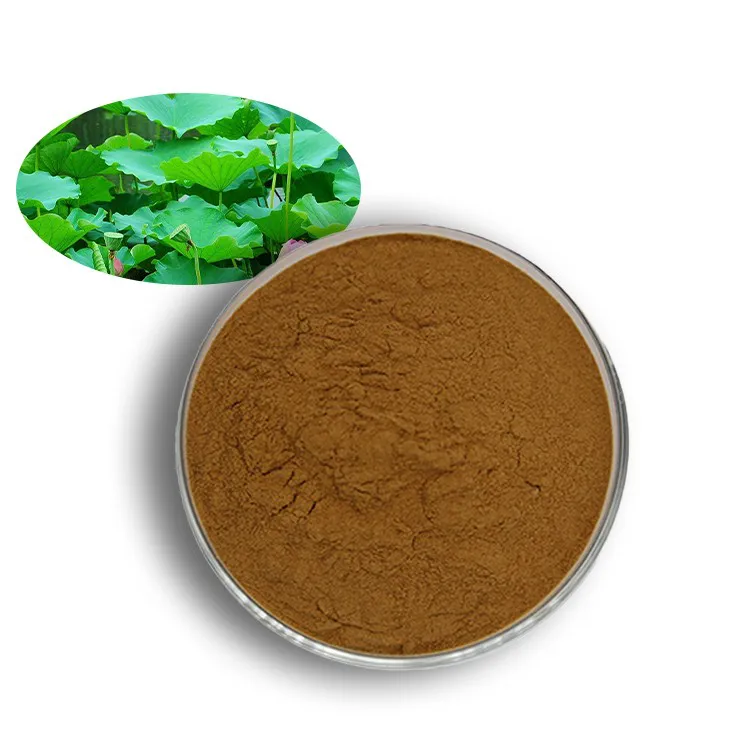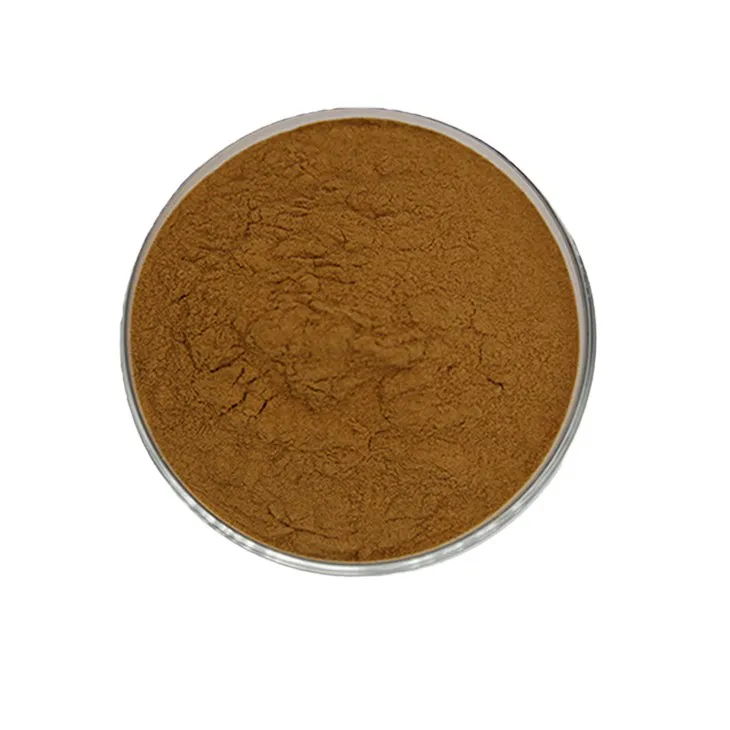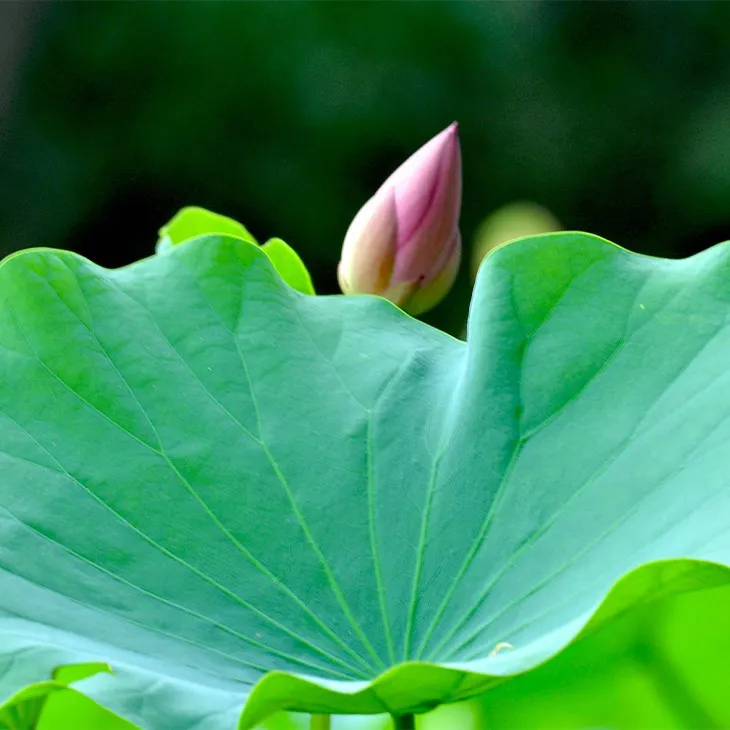- 0086-571-85302990
- sales@greenskybio.com
Chinese lotus leaf extract factories.
2024-11-28

1. Introduction
Chinese Lotus leaf extract factories are of great significance in the global market. China, with its vast territory, is rich in lotus resources, which provides a large amount of lotus leaves for extraction. The lotus, a plant deeply rooted in Chinese culture, has been used for centuries in traditional Chinese medicine. Now, the Lotus leaf extract produced by these factories has found its way into a wide range of applications both in China and around the world.

2. Abundant Supply of Lotus Leaves
China's geographical expanse is dotted with numerous lakes, ponds, and wetlands where lotus plants thrive. This geographical advantage ensures an abundant supply of lotus leaves. Different regions in China may have slightly different varieties of lotus, but all contribute to the raw material pool for extraction. For example, in the southern regions, the warm and humid climate promotes the growth of lush lotus plants. The large - scale cultivation of lotus not only provides a stable source of lotus leaves but also has certain ecological benefits, such as purifying water and providing habitats for aquatic organisms.

3. Comprehensive Production Processes
3.1 Collection of Fresh Lotus Leaves
The production process of Lotus leaf extract in Chinese factories begins with the careful collection of fresh lotus leaves. This is a crucial step as the quality of the raw material directly affects the final product. Skilled workers are usually involved in this process. They select lotus leaves that are in prime condition, avoiding those that are damaged or diseased. The collection time is also carefully considered. Generally, the lotus leaves are collected at a certain stage of growth to ensure the highest content of active ingredients.3.2 Pretreatment
After collection, the lotus leaves undergo pretreatment. This may include cleaning to remove dirt, debris, and other impurities. Then, the leaves may be dried to a certain extent to prepare for the extraction process. Drying helps to preserve the leaves and also makes it easier to handle during extraction. Different drying methods may be used, such as natural drying or using drying equipment with controlled temperature and humidity.3.3 Extraction
The extraction process is at the core of the production. There are various extraction methods employed in Chinese lotus leaf extract factories. One common method is solvent extraction. The choice of solvent is very important. It needs to be able to effectively dissolve the active ingredients in the lotus leaves while being safe and compliant. Ethanol is often used as a solvent in some cases. During the extraction process, strict control of parameters such as temperature, time, and solvent - to - material ratio is necessary to ensure the extraction efficiency and the quality of the extract.3.4 Purification
After extraction, the obtained extract usually needs to be purified. This is to remove impurities such as pigments, resins, and other unwanted substances. Purification methods can include filtration, chromatography, and other techniques. Filtration can remove large - particle impurities, while chromatography can be used to separate and purify specific active ingredients more precisely.3.5 Concentration and Drying
The purified extract may be concentrated to increase the content of active ingredients. This can be achieved through evaporation under reduced pressure or other concentration methods. After concentration, the extract is usually dried again to obtain a dry powder form of the lotus leaf extract. Drying can be carried out using freeze - drying or spray - drying methods, depending on the requirements of the product.3.6 Packaging
The final step in the production process is packaging. The dried lotus leaf extract is carefully packaged to ensure its quality and shelf - life. Packaging materials are selected based on the characteristics of the extract and the requirements of storage and transportation. Usually, moisture - proof and light - proof packaging is used to protect the extract from environmental factors that may cause degradation.
4. Skilled Workers and Technicians
These factories are staffed with skilled workers and experienced technicians. The workers are trained to perform their tasks efficiently and accurately during the various production steps. For example, those involved in collection know how to identify the best lotus leaves, and those in the extraction process are proficient in operating the extraction equipment. The technicians play a crucial role in ensuring the quality of the product. They are well - versed in the latest extraction techniques and are constantly researching and innovating. They monitor the production process closely, making adjustments when necessary. They also ensure that the factory complies with relevant quality and safety standards.

5. Research and Innovation
5.1 Improving Quality
Chinese lotus leaf extract factories are committed to research and innovation to improve the quality of the extract. They invest in research facilities and collaborate with research institutions to study the active ingredients in lotus leaves more deeply. By understanding the chemical composition and properties of these ingredients, they can optimize the production process to obtain a higher - quality extract. For example, they may explore new extraction methods or improve existing ones to increase the purity and activity of the active ingredients.5.2 Increasing Yield
In addition to quality improvement, increasing the yield of lotus leaf extract is also an important goal. Through research, factories may find ways to make better use of the lotus leaves, reducing waste during the production process. They may also develop new extraction techniques or modify existing ones to extract more active ingredients from the same amount of raw materials. This not only increases the economic benefits of the factory but also helps to meet the growing market demand more effectively.6. Applications of Lotus Leaf Extract
6.1 Traditional Chinese Medicine
In traditional Chinese medicine, lotus leaf has been used for a long time. The extract contains various active ingredients that are believed to have certain medicinal properties. For example, it may have functions such as promoting digestion, reducing fat, and clearing heat. It has been used in the formulation of traditional Chinese medicine prescriptions to treat some digestive system disorders and symptoms related to excessive internal heat.6.2 Modern Health Products
With the increasing popularity of natural health products, lotus leaf extract has found its way into a variety of modern health products. It is often added to dietary supplements, such as slimming pills or health - promoting teas. The slimming effect of lotus leaf extract is one of the main reasons for its use in these products. It is believed to help with weight management by regulating lipid metabolism.6.3 Skincare Items
Lotus leaf extract is also widely used in skincare items. It has antioxidant properties that can help to protect the skin from free - radical damage. It may also have anti - inflammatory effects, which are beneficial for treating skin inflammation and acne. In addition, the extract can be used in moisturizing and whitening products due to its potential to improve skin texture and complexion.7. Market Prospects
7.1 Increasing International Demand
In recent years, there has been an increasing international demand for natural and healthy products. Consumers around the world are more interested in products derived from natural sources, and lotus leaf extract fits this trend perfectly. As a result, Chinese lotus leaf extract factories are seeing more and more export opportunities. They are gradually expanding their market share in international markets, especially in regions where natural health products are highly popular, such as Europe and North America.7.2 Future Growth and Development
With the continuous growth of the global market for natural products, Chinese lotus leaf extract factories are poised for further growth and development. They can continue to expand their production scale, improve production technology, and develop more high - quality products. However, they also face some challenges, such as meeting more stringent international quality and safety standards, and dealing with competition from other countries' similar products. But overall, the future looks promising for these factories as they continue to explore new markets and applications for lotus leaf extract.FAQ:
What are the main production processes in Chinese lotus leaf extract factories?
The main production processes include the initial collection of fresh lotus leaves. Then, strict quality inspection is carried out on the collected lotus leaves. After that, the extraction process is carried out using appropriate extraction techniques. This is followed by purification and concentration steps. Finally, the extracted lotus leaf extract is packaged for sale.
How do Chinese lotus leaf extract factories ensure the quality of their products?
They ensure product quality in several ways. Firstly, they start with high - quality fresh lotus leaves from reliable sources. Skilled workers and experienced technicians are involved in every production step, and they follow strict production standards and operating procedures. Quality control checks are carried out at multiple stages during the production process, from raw material inspection to the final product inspection before packaging.
What are the new trends in research and innovation in Chinese lotus leaf extract factories?
One trend is to develop more efficient extraction methods to increase the yield of lotus leaf extract. Another is to explore new applications in different fields such as combining with other natural ingredients for better performance in health products. They are also researching on how to better preserve the active ingredients during the extraction and processing to enhance the overall quality of the extract.
How has the international demand influenced Chinese lotus leaf extract factories?
The increasing international demand for natural and healthy products has provided great opportunities for Chinese lotus leaf extract factories. It has encouraged them to expand production capacity. They are also more focused on meeting international quality standards, which has led to improvements in production technology and quality control. Moreover, it has driven them to explore new markets and develop new products to meet the diverse needs of international customers.
What are the main applications of lotus leaf extract produced in Chinese factories?
The main applications include traditional uses in traditional Chinese medicine, such as for promoting digestion and reducing dampness. In modern times, it is widely used in health products, for example, in dietary supplements for weight management. It is also used in skincare items, like in some anti - acne and oil - control products.
Related literature
- The Production and Application of Lotus Leaf Extract in China"
- "Research on the Quality Control of Lotus Leaf Extract in Chinese Factories"
- "Innovation Trends in Chinese Lotus Leaf Extract Production"
- ▶ Hesperidin
- ▶ citrus bioflavonoids
- ▶ plant extract
- ▶ lycopene
- ▶ Diosmin
- ▶ Grape seed extract
- ▶ Sea buckthorn Juice Powder
- ▶ Beetroot powder
- ▶ Hops Extract
- ▶ Artichoke Extract
- ▶ Reishi mushroom extract
- ▶ Astaxanthin
- ▶ Green Tea Extract
- ▶ Curcumin Extract
- ▶ Horse Chestnut Extract
- ▶ Other Problems
- ▶ Boswellia Serrata Extract
- ▶ Resveratrol Extract
- ▶ Marigold Extract
- ▶ Grape Leaf Extract
- ▶ blog3
- ▶ blog4
-
Chinese Oyster Peptide Powder Factories.
2024-11-28
-
The best organic L - carnitine.
2024-11-28
-
Certified organic acerola cherry extract.
2024-11-28
-
Wholesale β - carotene suppliers.
2024-11-28
-
Chinese lemon balm extract factories.
2024-11-28
-
100% Pure Organic Bitter Melon Extract.
2024-11-28
-
100% Pure Natural Yellow Pine Extract.
2024-11-28
-
Aminolevulinic acid
2024-11-28
-
Lemon Juice Powder
2024-11-28
-
Astaxanthin
2024-11-28
-
Oyster Mushroom Extract Powder
2024-11-28
-
Mulberry leaf Extract
2024-11-28
-
Curcumin
2024-11-28
-
Artichoke Leaf Extract
2024-11-28
-
Buckthorn bark extract
2024-11-28
-
Dan Shen Root Extract/Salvia Root Extract
2024-11-28
-
Lotus leaf extract
2024-11-28




















